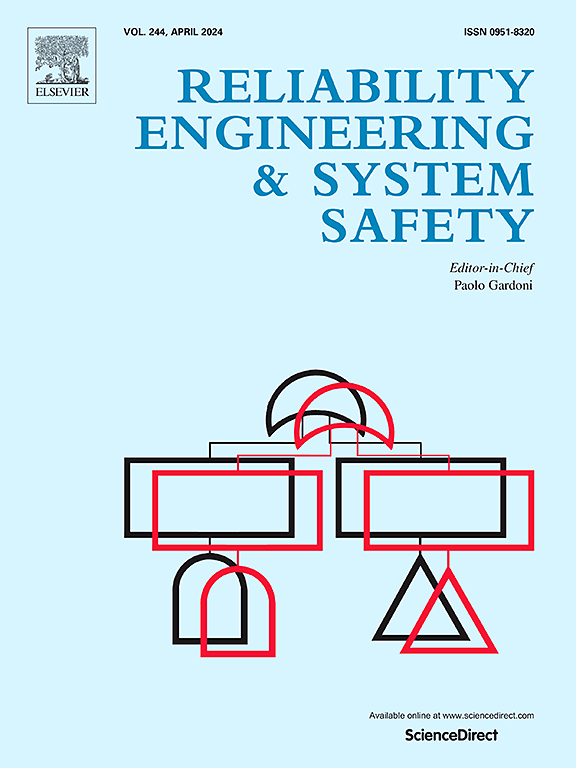基于双系统的控制杆驱动机构安全数字双模型与平台
IF 9.4
1区 工程技术
Q1 ENGINEERING, INDUSTRIAL
引用次数: 0
摘要
数字孪生方法是实现控制棒驱动机构等复杂核电设备数字化、智能化的基础技术。针对复杂技术系统的安全性,迫切需要开发适合的数字孪生建模方法和应用平台。然而,目前的数字孪生建模技术难以同时满足实时故障监测和长期预测性维护的要求。因此,本研究提出了一种基于安全双系统的五维数字孪生建模体系,该体系将用于可靠性和疲劳分析的离线数字孪生系统与用于实时故障监测的在线数字孪生系统相结合。Isight公司开发的控制杆驱动机构数字双平台,旨在整合双系统,实现实时监控和长期预测性维护。操作数据与实验数据的偏差小于5%,提高了控制棒驱动机构系统的可靠性和性能。本文章由计算机程序翻译,如有差异,请以英文原文为准。
Digital Twin Model and Platform Based on a Dual System for Control Rod Drive Mechanism Safety
The digital twin method is a foundational technology for the digitization and intelligence of complex nuclear power equipment, e.g. the control rod drive mechanism. There is an urgent need to develop digital twin modeling methods and application platforms tailored for the safety of complex technical systems. However, current digital twin modeling techniques struggle to meet the requirements for real-time fault monitoring and long-term predictive maintenance simultaneously. Therefore, a five-dimensional digital twin modeling architecture based on a dual system for safety, which combines an offline digital twin system for reliability and fatigue analysis with an online digital twin system for real-time fault monitoring, has been proposed in the current study. The control rod drive mechanism digital twin platform, developed in Isight, is designed to incorporate a dual system for both real-time monitoring and long-term predictive maintenance. A deviation of less than 5% is maintained between operational and experimental data, thus enhancing the reliability and performance of control rod drive mechanism system.
求助全文
通过发布文献求助,成功后即可免费获取论文全文。
去求助
来源期刊

Reliability Engineering & System Safety
管理科学-工程:工业
CiteScore
15.20
自引率
39.50%
发文量
621
审稿时长
67 days
期刊介绍:
Elsevier publishes Reliability Engineering & System Safety in association with the European Safety and Reliability Association and the Safety Engineering and Risk Analysis Division. The international journal is devoted to developing and applying methods to enhance the safety and reliability of complex technological systems, like nuclear power plants, chemical plants, hazardous waste facilities, space systems, offshore and maritime systems, transportation systems, constructed infrastructure, and manufacturing plants. The journal normally publishes only articles that involve the analysis of substantive problems related to the reliability of complex systems or present techniques and/or theoretical results that have a discernable relationship to the solution of such problems. An important aim is to balance academic material and practical applications.
 求助内容:
求助内容: 应助结果提醒方式:
应助结果提醒方式:


